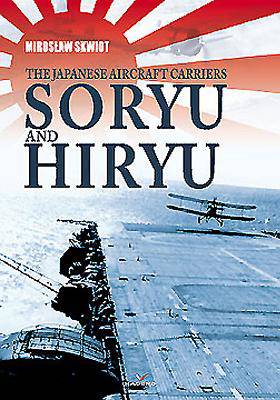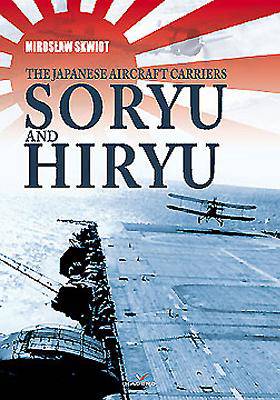
Je cadeautjes zeker op tijd in huis hebben voor de feestdagen? Kom langs in onze winkels en vind het perfecte geschenk!
- Afhalen na 1 uur in een winkel met voorraad
- Gratis thuislevering in België vanaf € 30
- Ruim aanbod met 7 miljoen producten
Je cadeautjes zeker op tijd in huis hebben voor de feestdagen? Kom langs in onze winkels en vind het perfecte geschenk!
- Afhalen na 1 uur in een winkel met voorraad
- Gratis thuislevering in België vanaf € 30
- Ruim aanbod met 7 miljoen producten
Zoeken
Omschrijving
Soryu meaning "Blue (or Green) Dragon") was an aircraft carrier built for the Imperial Japanese Navy (IJN) during the mid-1930s. A sister ship, Hiryū, was intended to follow Sōryū, but Hiryū 's design was heavily modified and she is often considered to be a separate class. Their aircraft supported the Japanese invasion of French Indochina in mid-1940. During the first month of the Pacific War, they took part in the attack on Pearl Harbor and the Battle of Wake Island and then supported the conquest of the Dutch East Indies in January 1942. The following month, their aircraft bombed Darwin, Australia, and continued to assist in the Dutch East Indies campaign. In April, Hiryū's aircraft helped sink two British heavy cruisers and several merchant ships during the Indian Ocean raid. Hiryū was the second aircraft carrier included in "The Second Naval Armaments Supplement Program" of 1934. Originally both carriers were supposed to be sister vessels, but the number of design modifications introduced during the construction of Sōryū resulted in many differences between the two. According to the original plans Hiryū was to be completed a year after Sōryū, but her construction (similarly to her predecessor) suffered delays caused by two key factors. The first one was the implementation of the lessons learned during the reconstruction of Kaga, which was going on simultaneously with Hiryū's construction. Then there was new data available from the early service days of Sōryū, which exposed some of the design's drawbacks and weaknesses. The number of issues popping up "along the way" was further increased by the Fourth Fleet Incident and by Japan's withdrawal from the previously signed naval treaties. Considering all those issues, it is not hard to imagine the inevitable impact they had on Hiryū's original design and construction schedule. The greatest source of delays was undoubtedly the aftermath of the Fourth Fleet Incident, which forced the Navy Aviation Bureau to introduce changes in the design of the second carrier. After the new requirements had been implemented, Hiryū's final design (known as the "Basic Project G-10") finally emerged.
Specificaties
Betrokkenen
- Auteur(s):
- Uitgeverij:
Inhoud
- Aantal bladzijden:
- 100
- Taal:
- Engels
- Reeks:
- Reeksnummer:
- nr. 95002
Eigenschappen
- Productcode (EAN):
- 9788364596520
- Verschijningsdatum:
- 19/07/2015
- Uitvoering:
- Hardcover
- Formaat:
- Genaaid
- Afmetingen:
- 216 mm x 305 mm
- Gewicht:
- 589 g

Alleen bij Standaard Boekhandel
+ 72 punten op je klantenkaart van Standaard Boekhandel
Beoordelingen
We publiceren alleen reviews die voldoen aan de voorwaarden voor reviews. Bekijk onze voorwaarden voor reviews.









